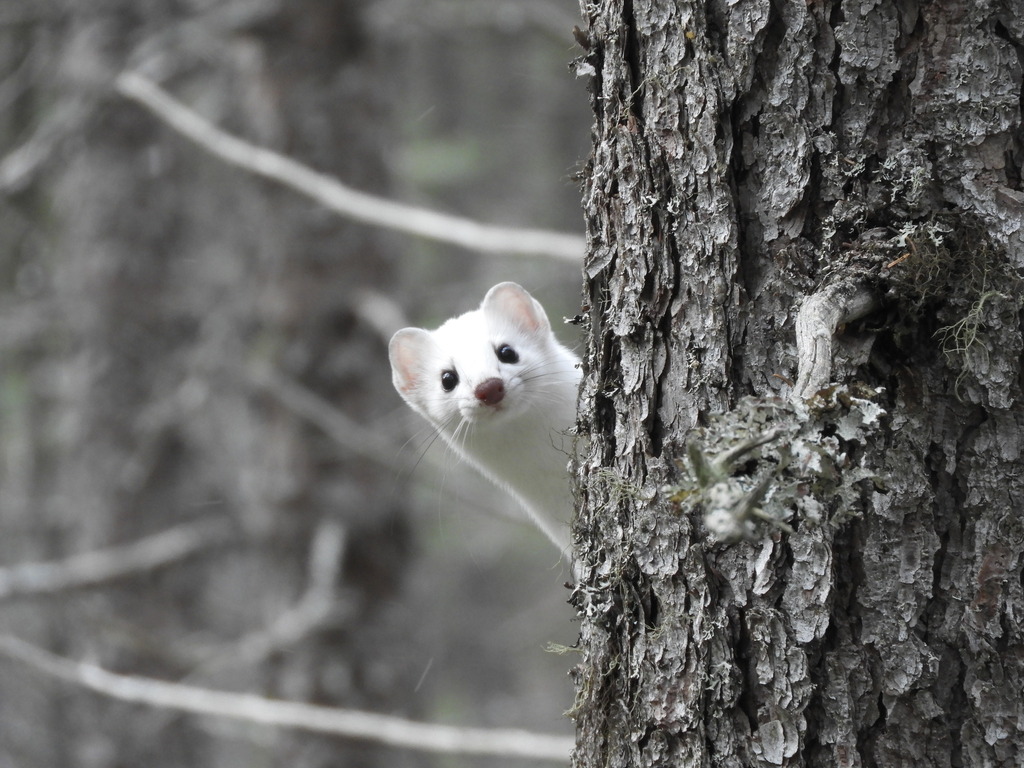
Peek-a-boo! A weasel curiously pokes its head out from behind a spruce in Vermont’s Northeast Kingdom. © @sdarmstadt
Congratulations to @sdarmstadt for winning the November 2022 Photo-observation of the Month for the Vermont Atlas of Life on iNaturalist! His photo of a wily weasel received the most faves of any iNaturalist observation in Vermont during the past month.
It seems cuteness outweighed the need for a species ID this November when it comes to deciding on the photo observation of the month! The winning observation of a weasel will remain unidentified in all likelihood, as the two possible species in Vermont – the Long-tailed Weasel (Neogale frenata) and the American Stoat (Mustela richardsonii) – are quite similar, and can only be safely differentiated by their tail length. These two species are ferocious predators, capable of taking down prey many times their size. Their pursuit of prey often brings them into contact with humans, and especially during the winter it is not uncommon for a weasel to take up residence in or near a house where mice and kitchen scraps can be a welcome and easily accessible mid-winter food source. This individual though was found and photographed far from human habitation in Vermont’s spruce-fir forest, possibly in search of such large prey as Snowshoe Hare! To see more of Sam’s photos from Vermont’s Northeast Kingdom, click here.
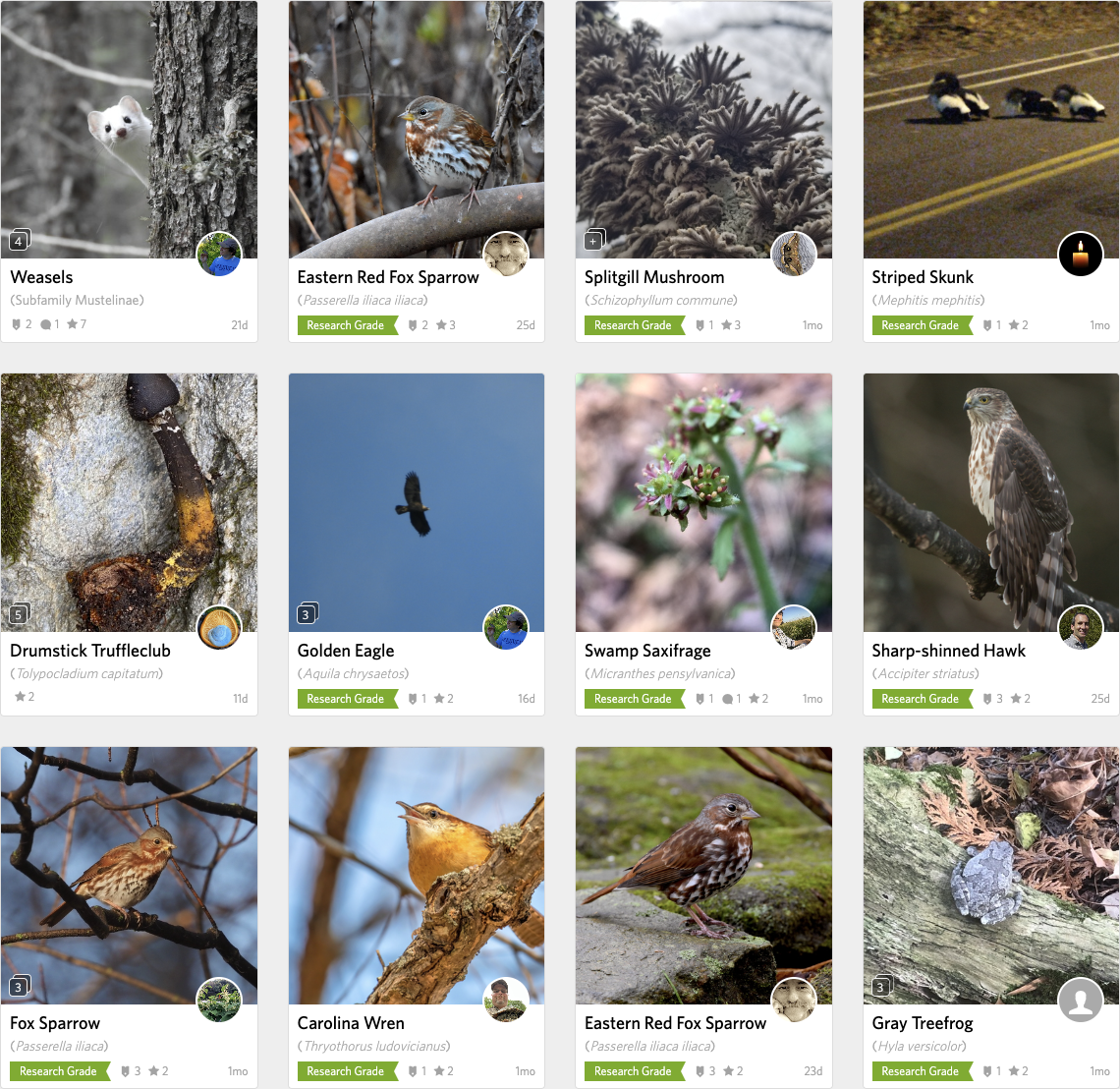
With 3,442 observations submitted by 534 observers in November, it was very competitive. Click on the image above to see and explore all of the amazing observations.
Visit the Vermont Atlas of Life on iNaturalist where you can vote for the winner this month by clicking the ‘fave’ star on your favorite photo-observation. Make sure you get outdoors and record the biodiversity around you, then submit your discoveries and you could be a winner!
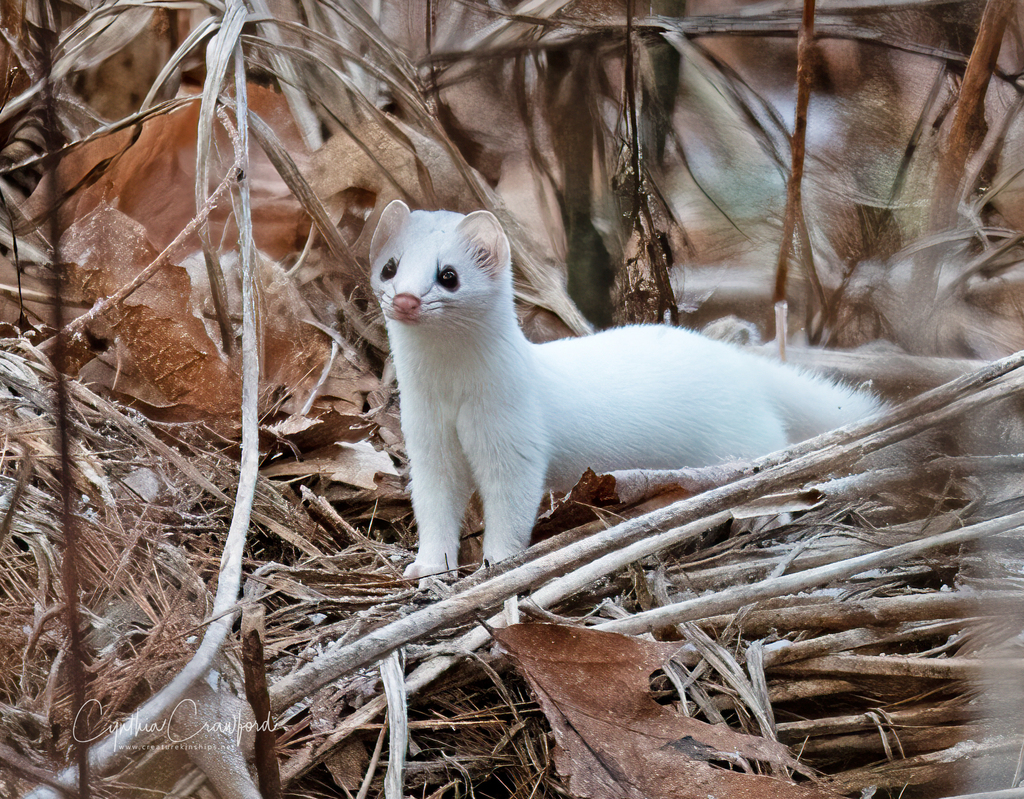
An American Stoat stands out like a sore thumb against the brown hues of a warm Vermont winter. © @cynthiacrawford
Congratulations to @cynthiacrawford for winning the December 2022 Photo-observation of the Month for the Vermont Atlas of Life on iNaturalist! Her photo of an American Stoat received the most faves of any iNaturalist observation in Vermont during the past month.
For the second month in a row, a snowy-white mustelid has won the top slot of photo-observation of the month! This time, with the tail of the weasel visible in photographs, we can be fairly certain that this species is Mustela richardsonii, also known as the American Stoat or Short-tailed Weasel. Looking at the surroundings of this stoat, we can see a classic example of what’s known as a phenological mismatch. In this case, the diminished snow cover across much of Vermont this winter has rendered this species’ sparkling white camouflage nearly useless. With the amorphous white landscape of snow replaced at least for now by brown tangles of sticks and thickets, this weasel will have to be extra cautious to avoid predators and sneak up on its prey successfully.
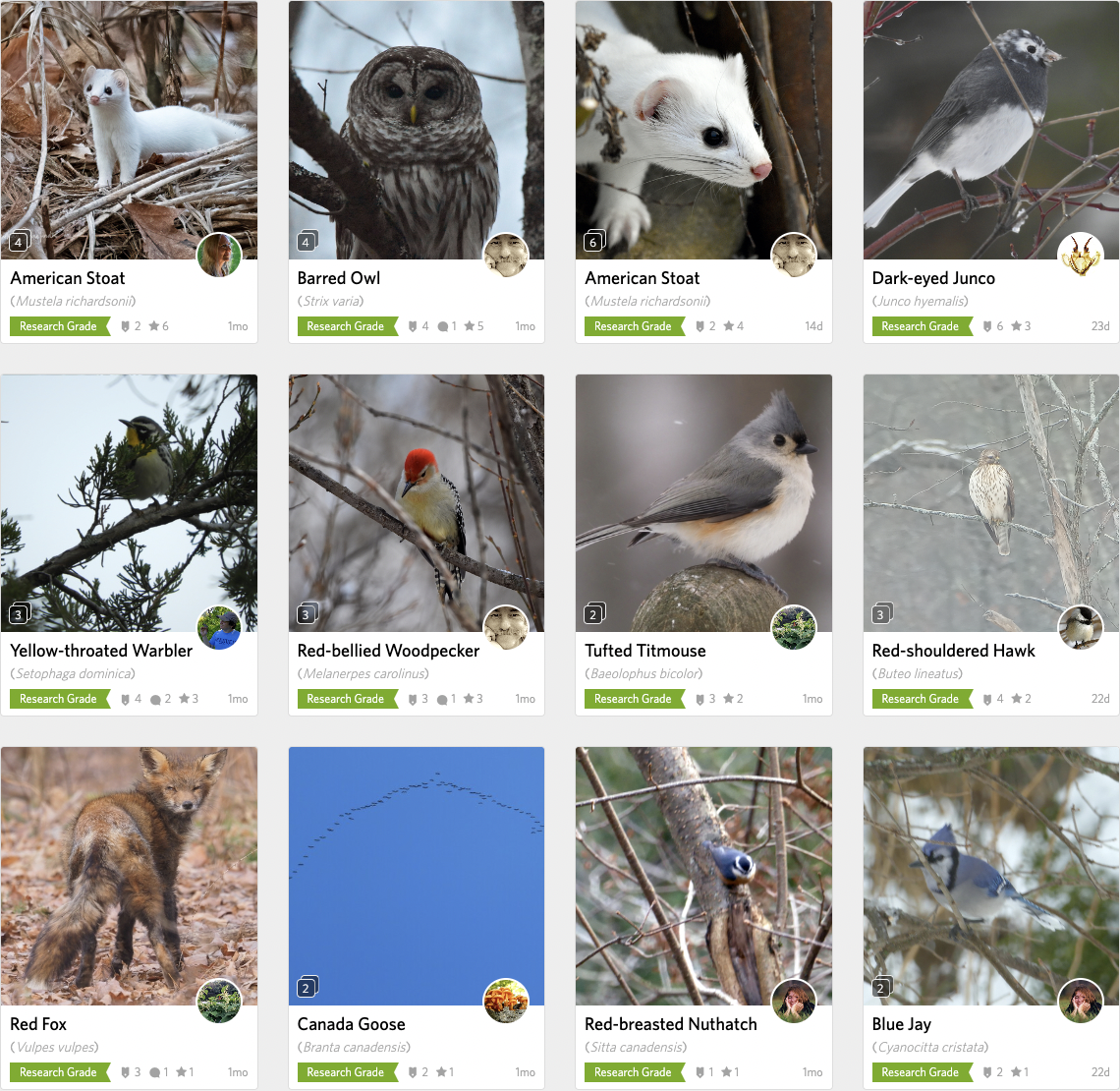
With 2,375 observations submitted by 257 observers in December, it was very competitive. Click on the image above to see and explore all of the amazing observations.
Visit the Vermont Atlas of Life on iNaturalist where you can vote for the winner this month by clicking the ‘fave’ star on your favorite photo-observation. Make sure you get outdoors and record the biodiversity around you, then submit your discoveries and you could be a winner!
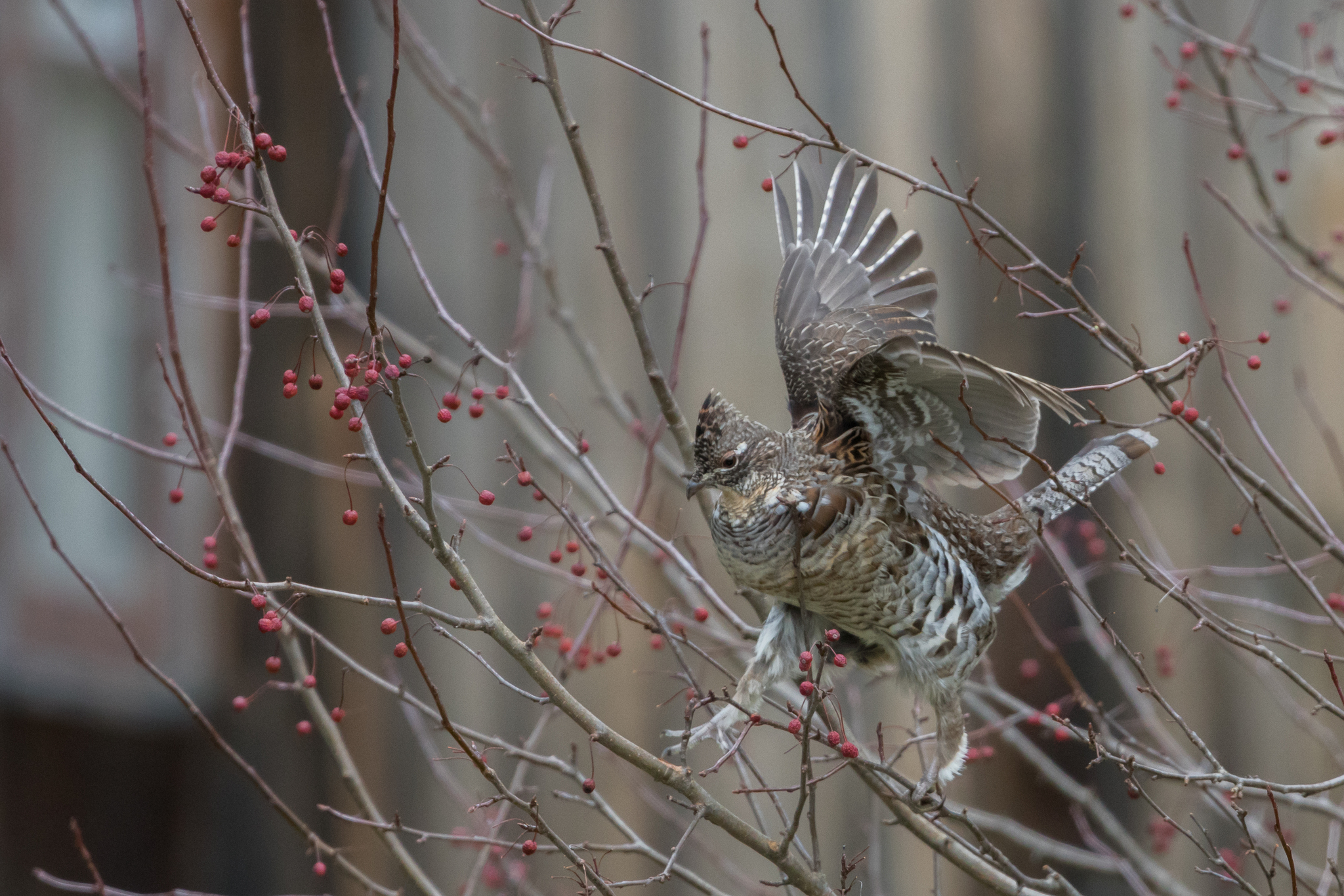
A Ruffed Grouse feeling frugivorous while walking the crabapple tightrope this winter. © @joshualincoln
Congratulations to @joshualincoln for winning the January 2023 Photo-observation of the Month for the Vermont Atlas of Life on iNaturalist! His image of a Ruffed Grouse taking advantage of a mid-winter food source received the most faves of any iNaturalist observation in Vermont during the past month.
A Ruffed Grouse’s diet is usually quite high in fiber, and in winter they can be found foraging on the buds, twigs, and catkins of trees and shrubs. Thanks to their specially-adapted digestive system, Ruffed Grouse are able to process food sources high in cellulose that many other species avoid, and in turn their scat is easily identifiable when found on the forest floor in winter. Occasionally though, Ruffed Grouse will take advantage of other food sources present in the winter, like the tasty crabapples this individual is seeking out while carefully navigating the thin branches in the treetops to reach for nutritious morsels.
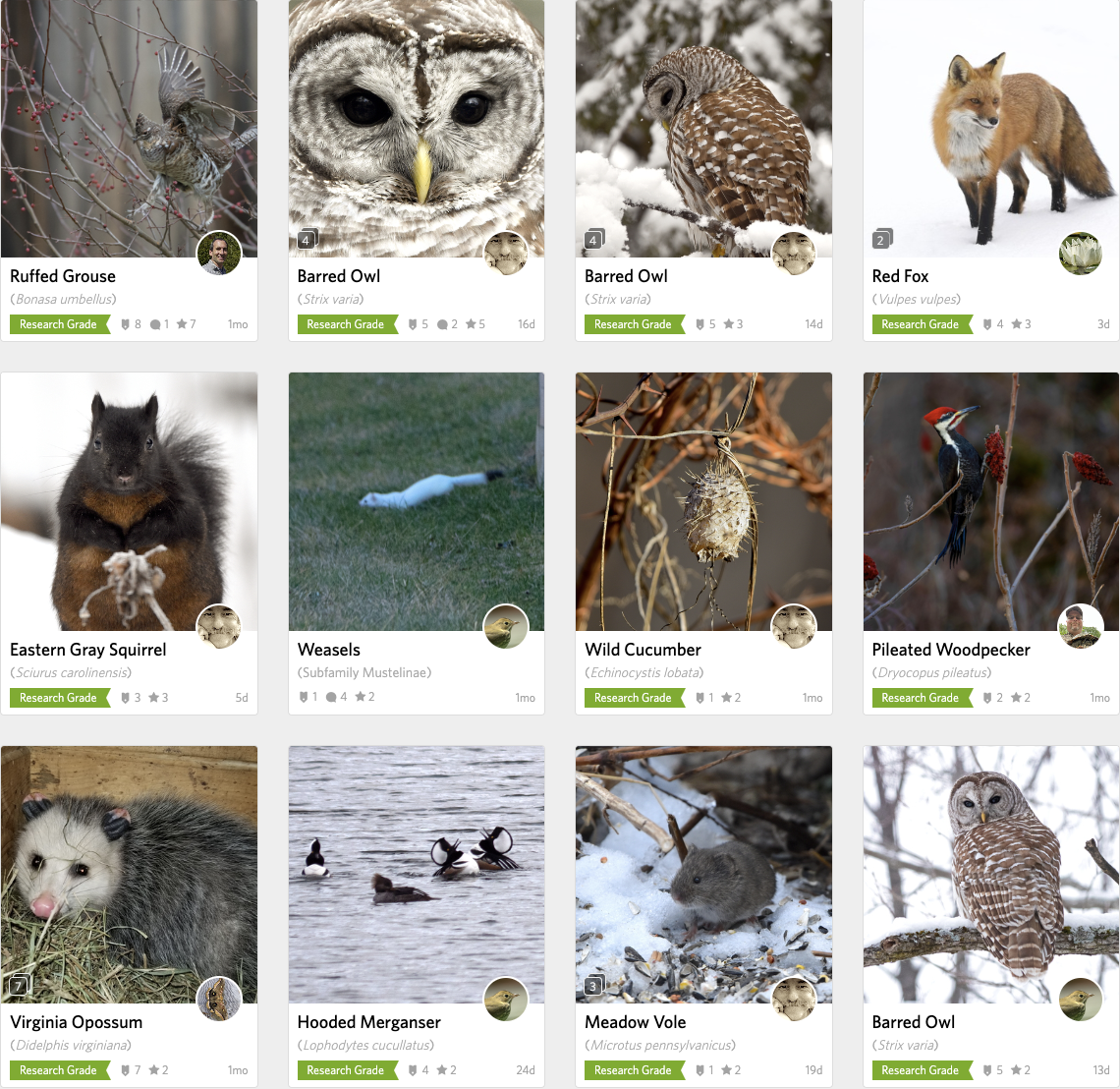
With 1,508 observations submitted by 288 observers in January, it was very competitive. Click on the image above to see and explore all of the amazing observations.
Visit the Vermont Atlas of Life on iNaturalist where you can vote for the winner this month by clicking the ‘fave’ star on your favorite photo-observation. Make sure you get outdoors and record the biodiversity around you, then submit your discoveries and you could be a winner!












